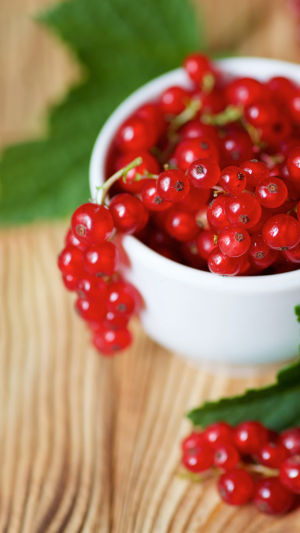Redcurrant (Ribes rubrum), a small, deciduous shrub belonging to the family Grossulariaceae, is a fascinating and highly valuable fruit.
Often likened to grapes due to their similar size and cluster growth pattern, redcurrants are distinct in their appearance, taste, and cultivation requirements.
These bright, tart berries have been cherished for centuries not only for their culinary versatility but also for their impressive health benefits.
A single planting can yield bountiful harvests for over 15 years, making redcurrants a profitable and sustainable crop for farmers.
<h3>Botanical Characteristics and Cultivation</h3>
Redcurrants are native to parts of Western Europe and have been cultivated since the 15th century. The plant is characterized by its slender, arching branches and lobed leaves.
The flowers are inconspicuous, but the fruits are strikingly vibrant, forming in clusters of translucent, ruby-red berries. Unlike grapes, which grow on vines, redcurrants grow on bushes that reach up to 1.5 meters in height.
Redcurrants thrive in cool, temperate climates and are relatively hardy, tolerating temperatures as low as -20 degrees Celsius. They prefer well-drained, loamy soil with a neutral to slightly acidic pH.
Planting usually occurs in late autumn or early spring, allowing the plants to establish themselves before the growing season. One of the remarkable aspects of redcurrant cultivation is the plant's longevity; once established, a redcurrant bush can produce fruit for over 15 years with proper care.
<h3>Harvesting and Yield</h3>
The harvesting period for redcurrants typically spans from late June to August, depending on the climate and specific cultivar. The berries are hand-picked, as mechanical harvesting can damage the delicate fruits.
A mature redcurrant bush can yield between 3 to 4 kilograms of fruit per season. Given their longevity, redcurrants offer an extended period of productivity and profitability for growers.
<h3>Economic Viability</h3>
From an economic standpoint, redcurrants are an attractive crop due to their long productive lifespan and relatively low maintenance requirements. Initial costs include purchasing and planting the bushes, which are offset by the minimal need for fertilizers and pesticides.
Redcurrants have a strong market demand, especially in Europe, where they are widely used in jams, jellies, desserts, and beverages.
The profitability of redcurrants is further enhanced by their versatility in value-added products. Beyond fresh consumption, redcurrants can be processed into juices and syrups.
The high pectin content in redcurrants makes them ideal for preserves and jellies, which can fetch a premium price in markets. Moreover, the berries are rich in vitamins C and K, manganese, and antioxidants, appealing to health-conscious consumers and boosting their market value.
<h3>Health Benefits and Culinary Uses</h3>
Redcurrants are not only delicious but also packed with nutrients. They are an excellent source of vitamin C, providing more than 50% of the daily recommended intake per 100 grams.
This makes them a potent immune booster and an important dietary addition. The berries also contain vitamin K, essential for bone health and blood clotting, and manganese, which is vital for metabolism and antioxidant functions.
In the culinary world, redcurrants are celebrated for their tart flavor, which adds a refreshing contrast to sweet and savory dishes. They are often used in desserts such as tarts, pies, and crumbles, where their acidity balances the sweetness.
Redcurrant sauce is a classic accompaniment to meats, particularly game, and their bright color and flavor make them a popular choice for garnishes and salads.
Health Benefits of Redcurrant
Video by Daily Bites





